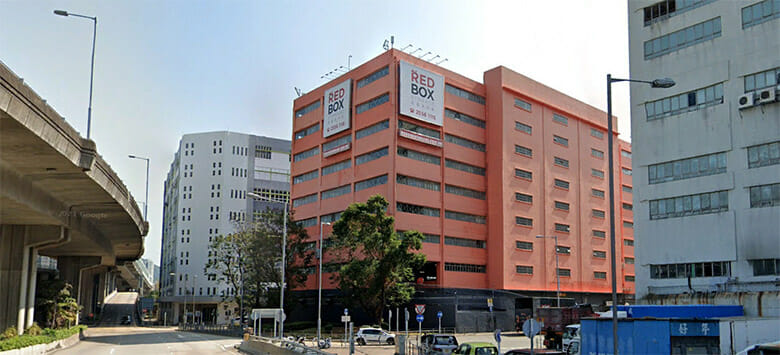
RedBox already has this facility on Shing Wan Road in Shatin
Brookfield has agreed to acquire industrial assets in Hong Kong’s New Territories from Hanison Construction for HK$211.3 million ($26.9 million), following closely behind the Canadian asset management giant’s under-the-radar purchase of local self-storage operator RedBox.
The assets comprise workshops 1 to 23 on the fourth floor of Block A at Shatin Industrial Centre and car parking spaces V49 and V55 on the second floor of the building, Hanison said Tuesday in a filing with the Hong Kong stock exchange.
Market sources tell Mingtiandi that Brookfield plans to convert the Shatin industrial units into a self-storage facility under the RedBox portfolio, tapping a hot sector that has also seen a series of conversion-led acquisitions by rival investor Blackstone. RedBox executives declined to comment.
Toronto-based Brookfield quietly bought RedBox Storage from InfraRed NF in a deal that closed in March, sources said. InfraRed NF is a joint venture of Hong Kong developer Nan Fung Group and British investment firm InfraRed Capital Partners, which is exiting the real estate business to focus strictly on infrastructure. Brookfield representatives also declined to comment on the Shatin acquisition or on the takeover of RedBox.
Struggling for Sheds
Situated at 5-7 Yuen Shun Circuit near the City One residential precinct, the partly leased Shatin property generated an annual rental income of HK$3,180,000 and HK$3,485,000 in the financial years ended 31 March 2021 and 31 March 2022, Hanison said. The developer, controlled by the Cha family of Hong Kong Resorts International, expects to book a gain on the disposal of HK$66.2 million.

Tim Alpe joined RedBox as CEO early last year
Upon completion of the transaction, Brookfield will take possession of the 34,525 square foot (3,207 square metre) industrial space, paying roughly HK$6,120 ($780) per square foot for the conversion opportunity.
The limited supply of industrial stock for sale in the market means that investors buying into strata-titled floors can still enjoy a decent return from the assets, said Antonio Wu, head of capital markets for Greater China at Knight Frank, which did not broker the Shatin deal.
“The mini-storage business seems to be quite active in the last year, and in particular Blackstone and Storefriendly have been buying en-bloc properties to convert into mini-storage,” Wu told Mingtiandi. “This sector will continue to grow despite the fact that there are quite a number of players and operators in the market which offer the similar service and product, hence the growth should be slower depending on the locations.”
Blackstone’s trio of acquisitions in 2021 included the Elegance Printing Centre, a Shau Kei Wan property picked up from the family of late “Shop King” Tang Shing-bor for HK$500 million. That November deal followed the US private equity giant’s HK$282.6 million September purchase of Yip’s Chemical Building in the Fanling area and the HK$508 million April buy of the New Media Tower in Kwun Tong, the latter property having already opened as a Storefriendly location through a joint venture with the local self-storage operator.
Self-Storage Heats Up
InfraRed NF acquired a 90 percent stake in RedBox in 2018, on the heels of a 2017 investment of $28 million in China Mini Storage, a mainland-based self-storage provider.
RedBox was founded in 2014 by E3 Capital Partners, a property investment firm led by Simon Tyrrell, and now owns and operates five self-storage facilities in Shatin, Chai Wan, Yau Tong, Tuen Mun and Tsuen Wan, spanning more than 400,000 square feet of space.
Tyrrell stepped down as RedBox CEO in early 2021 to become a board member and executive chairman, focusing on the company’s strategic initiatives. His successor, Tim Alpe, previously served as chief operating officer of the Ovolo boutique hotel group in Hong Kong and Indonesia.
The New Territories contains the lion’s share of Hong Kong’s 690 self-storage locations with 39 percent, according to data compiled by Savills, followed by Hong Kong Island with 32 percent and Kowloon with 29 percent. Of the total, 249 buildings are considered old, with 88 percent of them having been built in 1987 or earlier, presenting a potential flight-to-quality opportunity, the property services firm said.
Leave a Reply